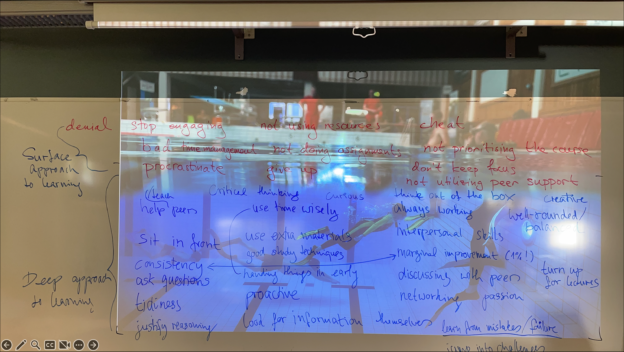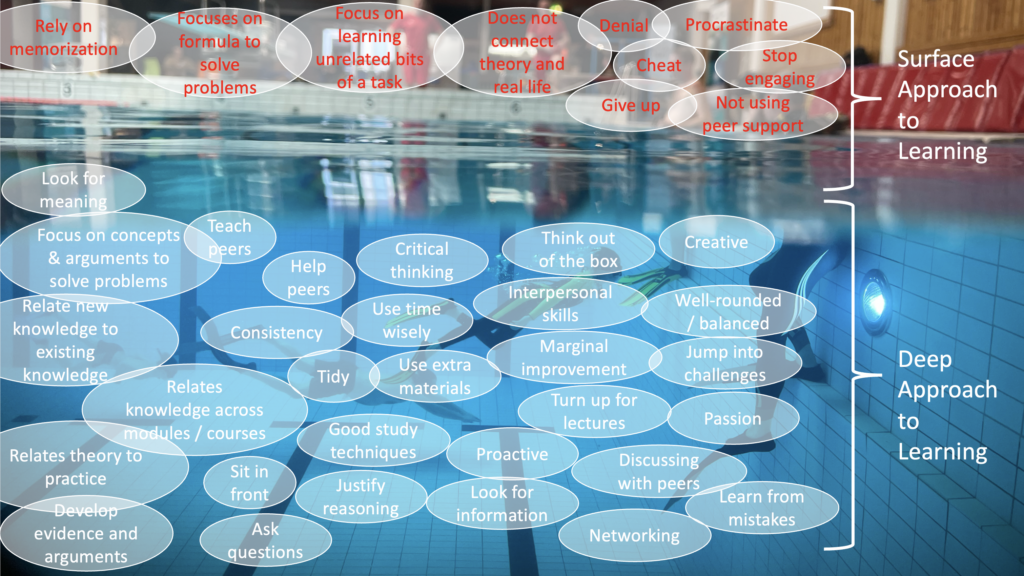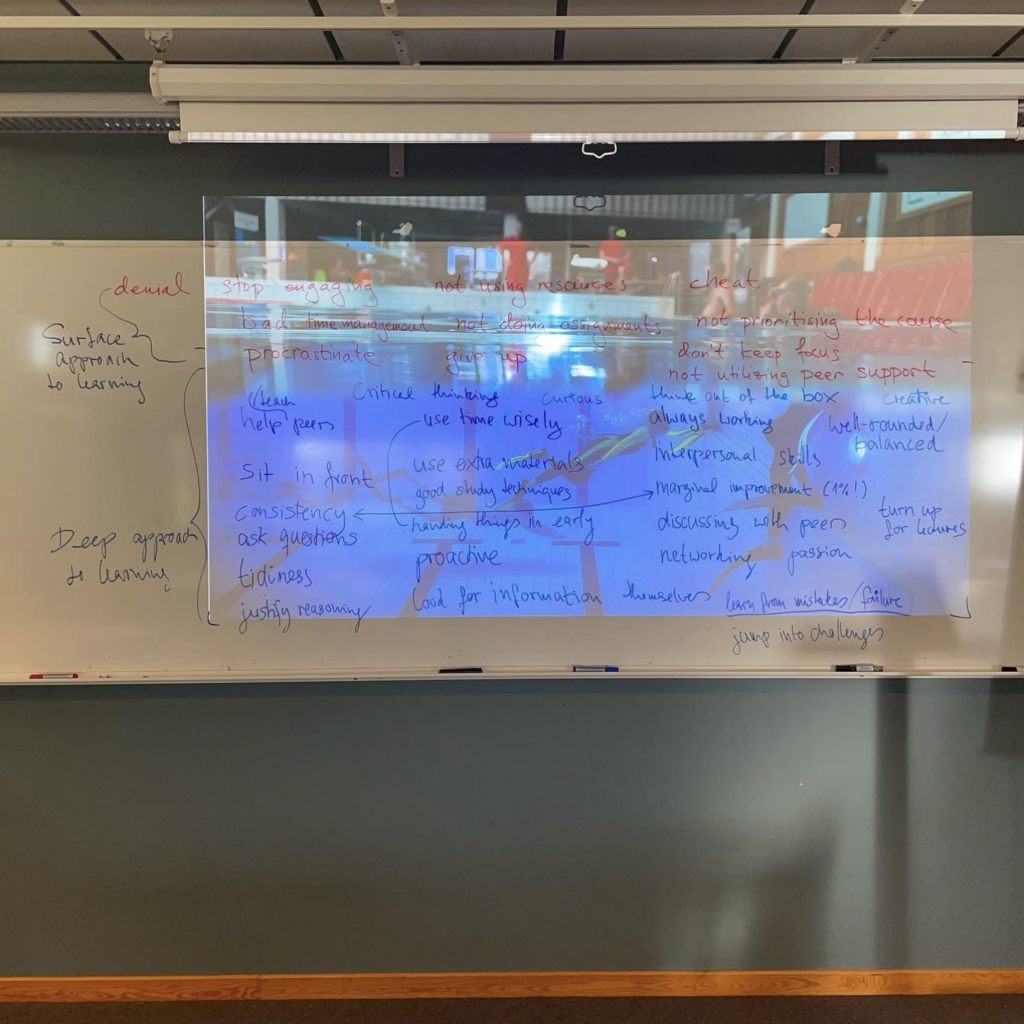Things I didn’t try beforehand and that still worked out well: asking participants to brainstorm what students do who perform well in their courses, what less successful students do, collecting & clustering keywords for both on the whiteboard, and then projecting a picture from our Active Divers freediving training on top to stress the point that it is a surface APPROACH and deep APPROACH to learning, and rather than an inert quality in a student, that it’s often a strategic decision which one is being used (and a surface approach might be the strategic choice in many cases!), and that instruction can encourage one — or the other.
As soon as I switched on the projector, participants took out their phones and started taking pictures. I like to take that as a sign that this visualization is helpful and that they want to remember it!
The next day, I brought the photo at the top of this post up to remind them of what we did yesterday, and then showed the version above, where I used everything we had collected yesterday*, plus a bit of what the literature says. What a perfect bridge into what teachers can do to help students take a deep approach to learning by looking at how they design instruction, what gets rewarded, what opportunities for cooperation and peer feedback are provided, how much autonomy students have, how we can remove barriers for learning, and voila: We are now talking about stereotype threat, Universal Design for Learning, self-determination theory, and co-creation! Plus I got to show a freediving picture :-D
*And we talked about how “sit in front”, for example, is maybe a common symptom of a deep approach to learning, but it’s not synonymous…



Pingback: Currently reading: "Teachers interacting with students: an important (and potentially overlooked) domain for academic development during times of impact" (Roxå & Marquis, 2019) - Adventures in Oceanography and Teaching